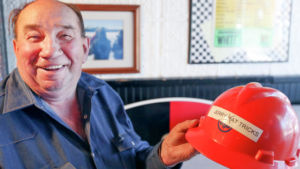Minnesota’s Rich Mining Tradition Still Runs Deep

Phil Warwas has punched in for the last time after more than half a century in the mining industry. But his story in the Duluth News Tribune points to the bright future ahead for thousands of younger Minnesotans just starting out, if and when the state finally allows environmentally responsible development of our world-class mineral resources.
He’s endured layoffs and yearlong strikes during that time, but stuck around to pursue his passion. Machining isn’t something he plans on giving up in retirement either — he’ll be doing plenty of it from his shop at home as a hobby.
“The machine shop held a lot of challenges, and it really made it interesting,” Warwas said. “I, for the most part, really enjoyed my job.”
The smile of Warwas’ face in the newspaper’s photo says everything about the lifetime of satisfaction and economic well-being he derived from working in the industry since he was 20. In a way, mining turned out to be the family business.
Raised on a farm near Bemidji but attracted to the high wages of Iron Range miners, Warwas joined his older brothers and went to work in the mines in 1965. Of the six Warwas boys, five worked in Iron Range mines.
Warwas was hired in May 1965 as a laborer at $2.28 per hour, but within a few weeks was driving trucks at $2.93 per hour.
“Big wages,” Warwas said. The federal minimum wage in 1965 was $1.25.
More than half a century later, the Bemidji native can take satisfaction in a job well done and passing on his skill set to the next generation of miners
At a retirement party for Phil in Keewatin’s Bernie’s Main Dry, Phil’s brother Lyle Warwas, 85, said he’s watched his brother grow up as a good, honest worker.
“I’m actually quite proud of my brother,” said Lyle.
Brian Haupt, a fellow Keetac machinist agreed.
“He’d give his right arm for everyone,” Haupt said.
It’s long past time to give the next generation of Minnesotans a shot at the high-paying jobs and benefits the mining industry provides. American Experiment’s new report, Unearthing Prosperity: How Environmentally Responsible Mining Will Boost Minnesota’s Economy, estimates development of the state’s mineral resources will pump $3.7 billion into our state economy each year and provide 8,500 jobs. That kind of opportunity might just make Phil Werwas think twice about retirement.